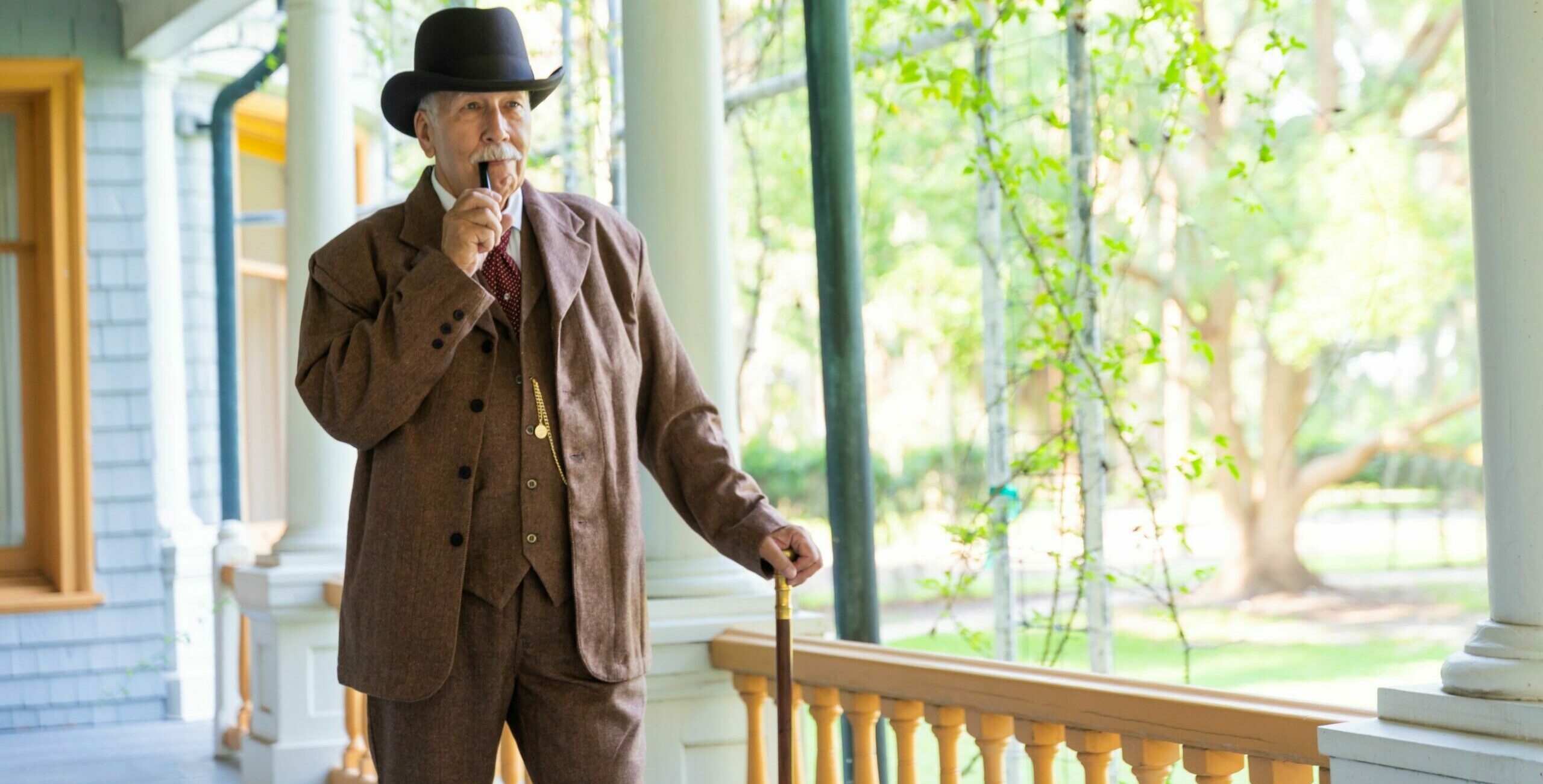By Patrick Carmody, Museum Educator
The staff of Mosaic, Jekyll Island Museum live and breathe history every day. Therefore, it comes as no surprise that some tour guides have stepped into the role of the very historical figures they speak about. Mosaic has offered several dynamic living history programs over the years that have seen a growing interest from visitors. The roles are varied in style and charisma, with interpreters finding a personal connection to these historical figures. Perhaps a similarity in life story, a fascination with that person’s life, or maybe an appreciation for what they accomplished in life, each guide finds a way to bring that character to life.
One of the most vibrant living history characters portrayed has been Ernest Grob, Club Superintendent for the Jekyll Island Club for 42 years beginning in 1889. In tours surrounding his life, the stories told by Mr. Grob would refer often to the work being done in and around the district under his watchful eye. Ernest Grob may seem niche as a historic figure, but his impact on Jekyll Island in the Club era was immense. Letters regarding daily life, operational needs, and complaints paint life on the Island in a very colorful manner. The character has been portrayed by Will Story, Museum Manager as part of the Gilded Age Ghosts and Ghouls program offered each Fall.
Women’s history month in March depicts another unique perspective showcasing Jean Struthers of Moss Cottage. Emily Robertson, former Lead Interpreter of Mosaic, brought Jean to life and entertained guests in Moss Cottage with tales of life at the Club. She shared gossip surrounding herself, friends she had on Jekyll Island, what was happening out in the world of the early turn of the century, and her family’s personal history at this world-renowned vacation destination. Mrs. Struthers also appeared most recently in an after-hours program where she is having a conversation about current events with her neighbor Joseph Pulitzer.
Under the guise of checking in on the Indian Mound Cottage, Mr. J.P. Morgan Jr., or Jack as he preferred to those who knew him well, strutted the lawn of the Sans Souci once again. J.P. Morgan Jr. was after all, President of the Club in that time period, so it made sense for him to be browsing about and checking on the furniture and buildings progress. Jack’s history was particularly a strong fascination as the result of tour guide Tim Maki, who conducted extensive research into the role as well as shaved his beard to match the accuracy of Jack’s appearance. Jack’s history was celebrated with a program as a part of the lobby exhibit at that time, the Morgan Family Spotlight which you can read about more here.
The support of the Jekyll Island Foundation and Friends of Coastal Georgia History allow us to step back into the ages that came before our own. For the tour guides at Mosaic, the past comes to life from the pages of history. Visitors to the Island are able to experience the rich history when guides don their period attire and take on these larger-than-life roles. To partner with the historic resources team to bring history to life, click HERE.

